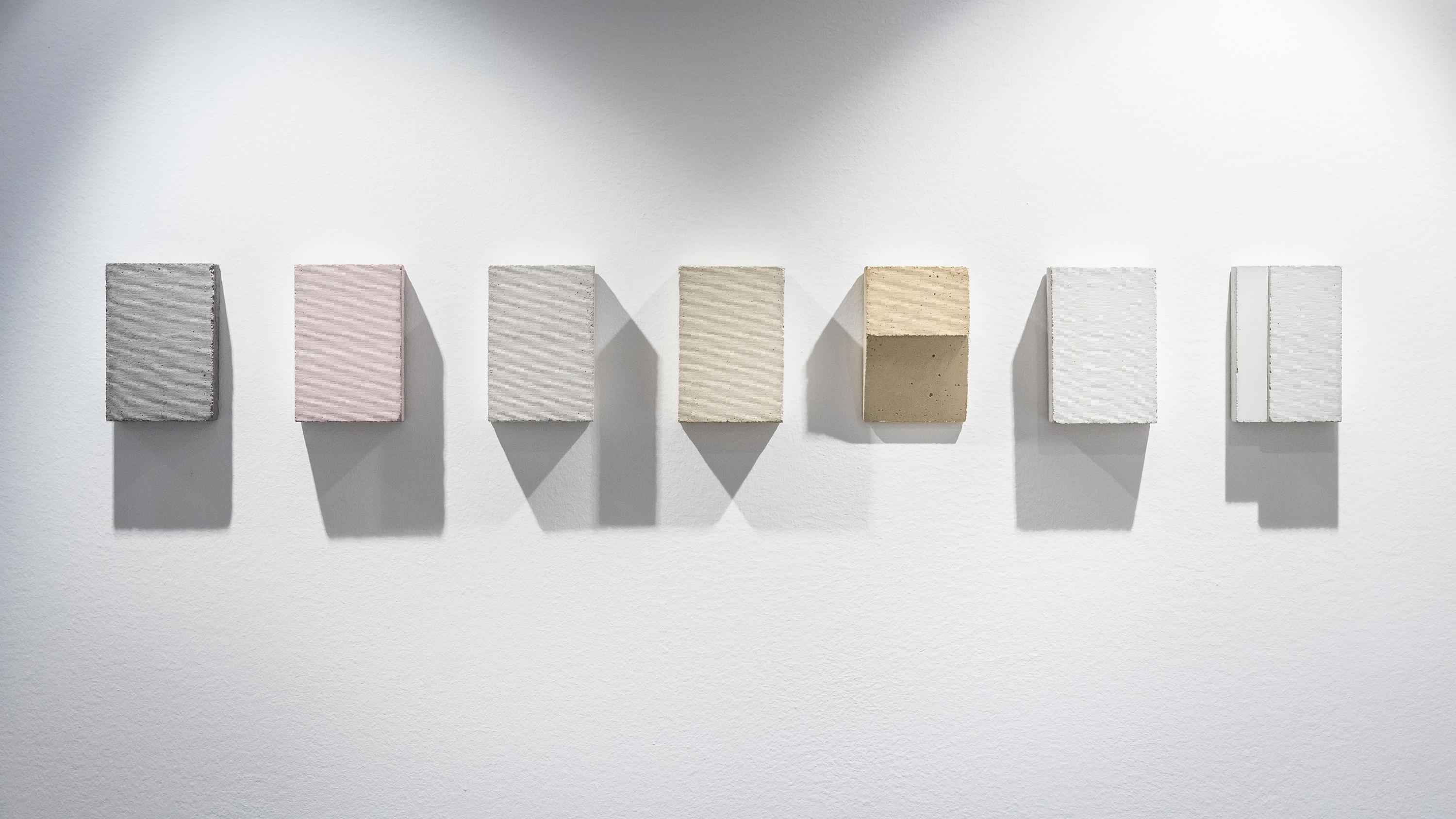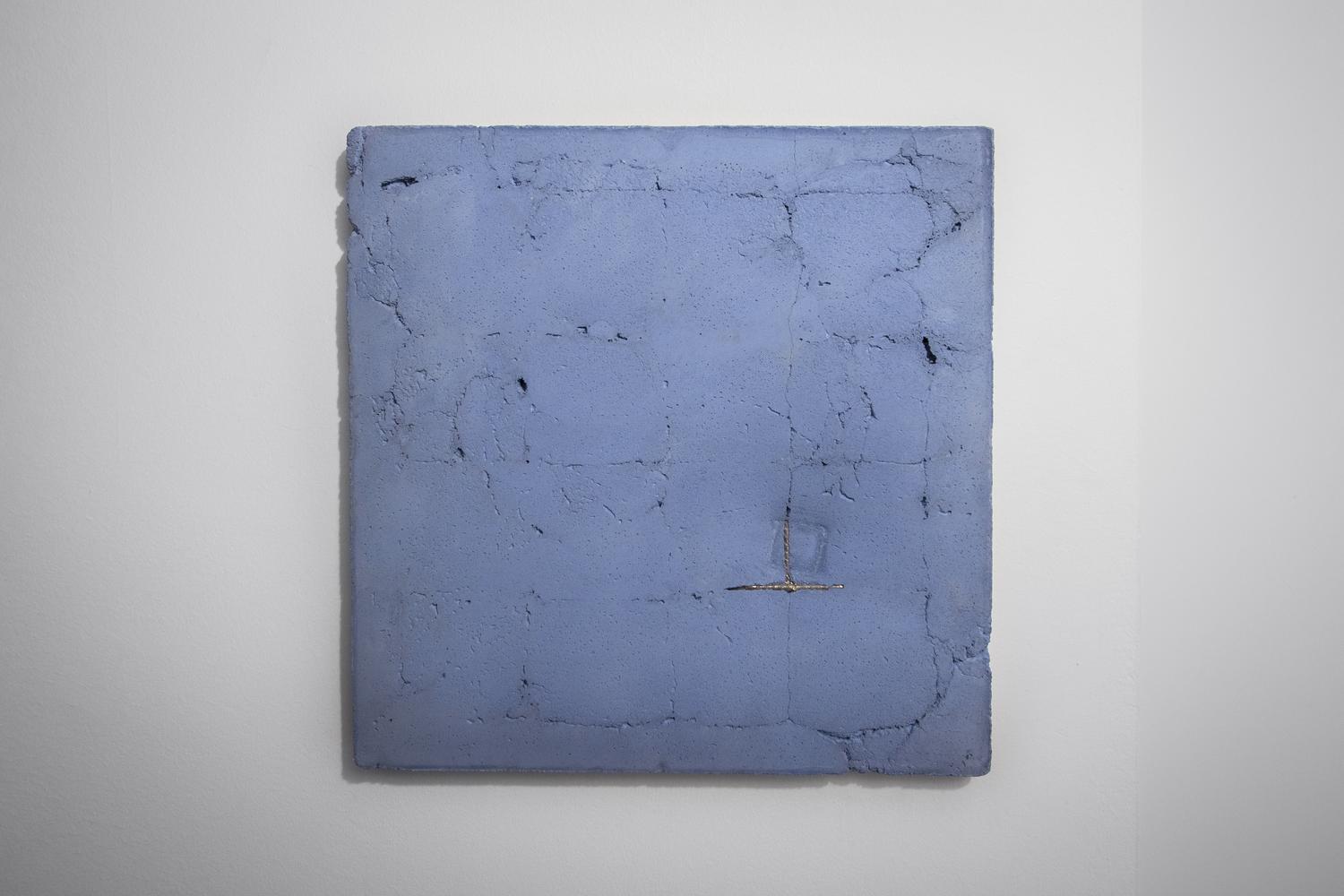Marco La Rosa
Beneath Between Beyond16 December 2018 ︎︎︎ 15 February 2019
di Jessica Bianchera
Uno degli aspetti più evidenti della ricerca di Marco La Rosa (Brescia, 1978) è sicuramente l’inscindibile legame con l’ambito filosofico, che si fa matrice concettuale non solo delle singole opere (o cicli di opere), ma più in generale del pensiero dell’artista, del suo modo di sentire il mondo e le leggi universali che lo regolano. Prima di tutto l’indagine sul vuoto, sulla dimensione più immateriale delle cose, per certi versi insondabile eppure così concreta. Un vuoto che si declina sia in senso fisico che spirituale, sia in veste tangibile che trascendentale in un passaggio dall’universale all’intimo che, dialogando con gli ambienti della mostra, serpeggia tra le sale di Spazio Cordis andandosi a insinuare sempre più in profondità.
One of the most salient aspects of Marco La Rosa’s search (born in Brescia in 1978) is surely its indissoluble link with the philosophical sphere, which becomes the intellectual matrix not only of the single works (or cycles of works), but more generally of the artist’s thought, of his way of experiencing the world and the universal laws that regulate it. First and foremost, the investigation into the void, into the most immaterial dimension of things, which is in some ways so unfathomable and yet so concrete. A void that expresses itself on both the physical and the spiritual plane in its tangible as well as transcendental aspects, in a passage from the universal to the intimate which is placed in dialogue with the setting of the show, spreading through the exhibition spaces of Spazio Cordis and insinuating itself deeper and deeper.
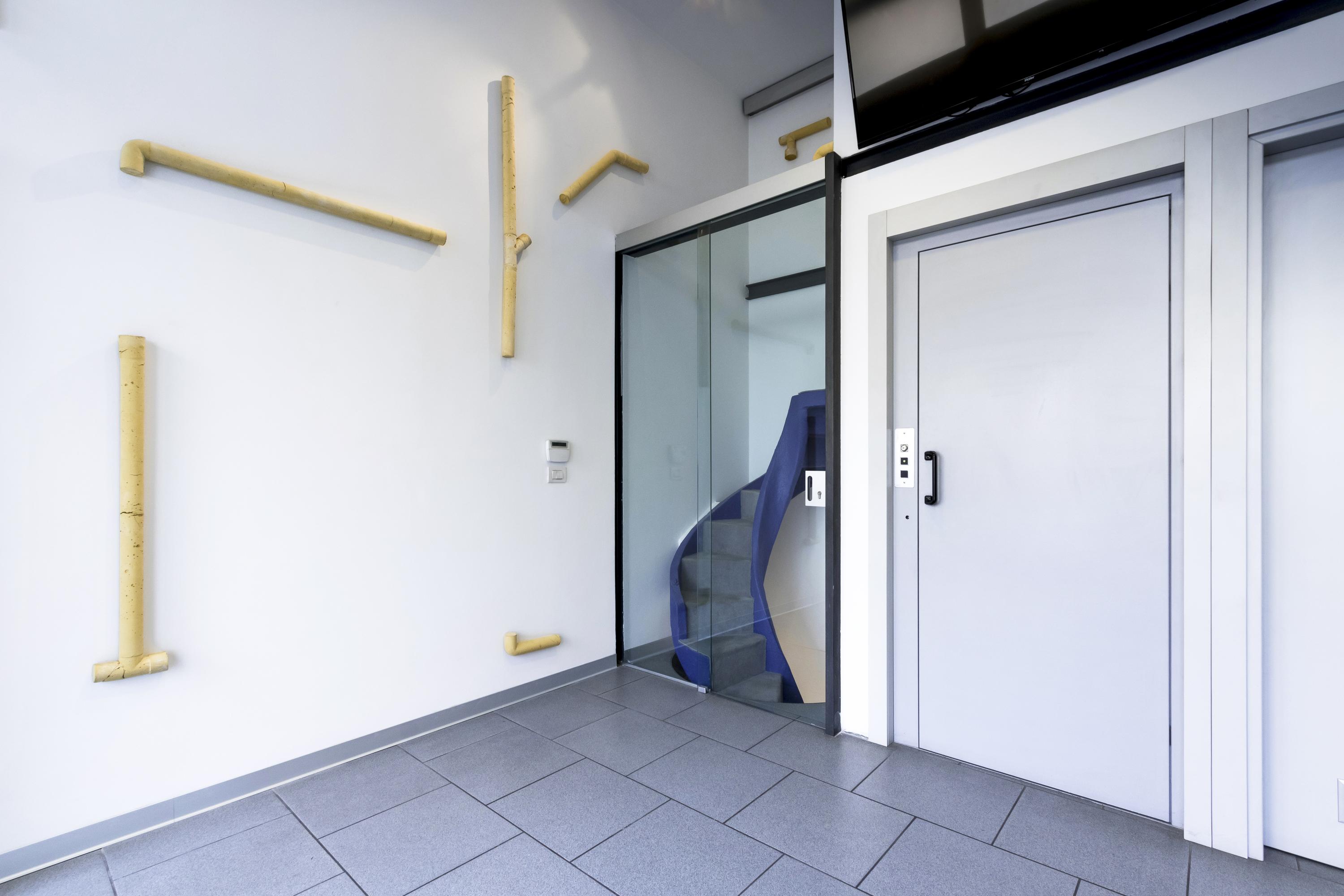
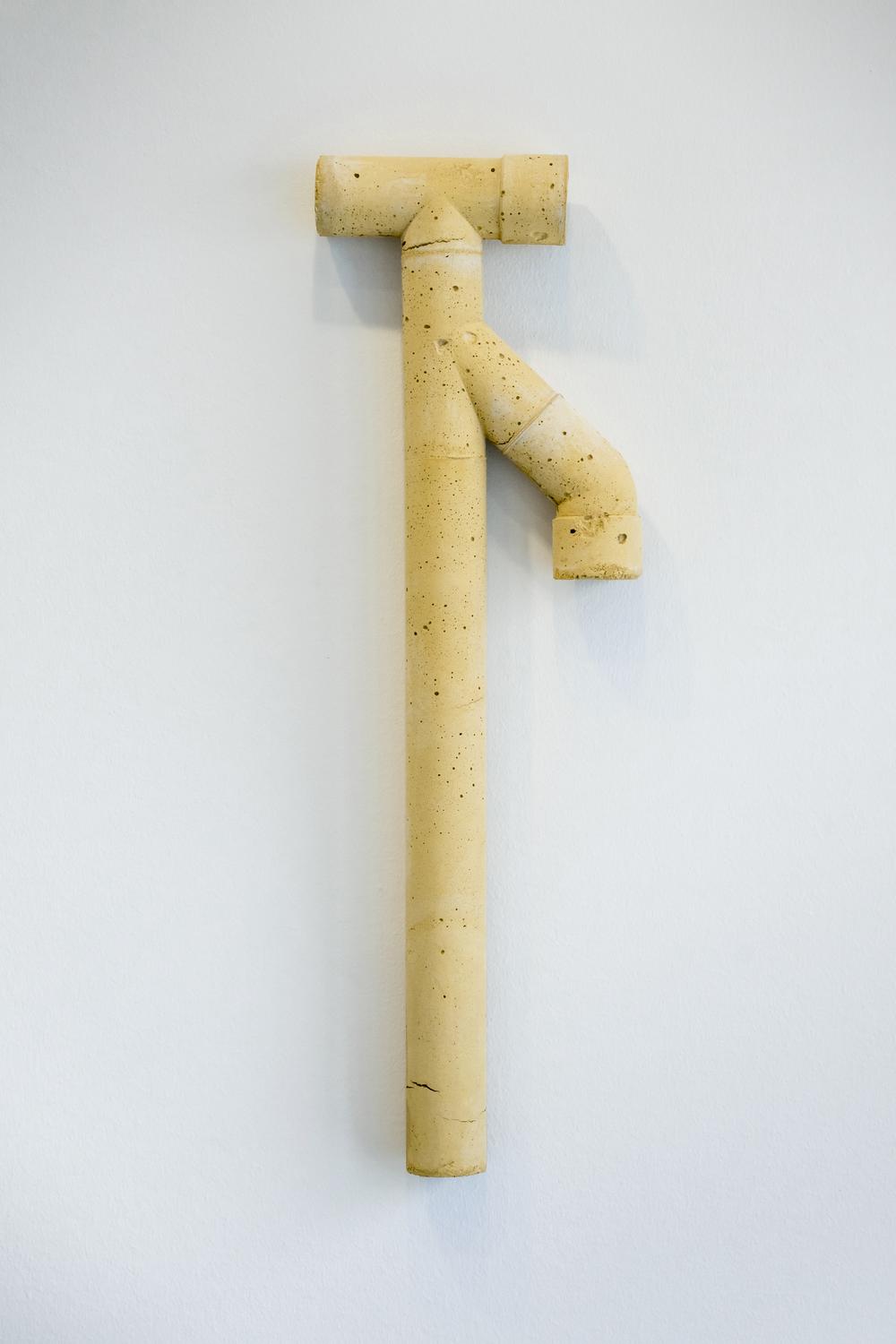
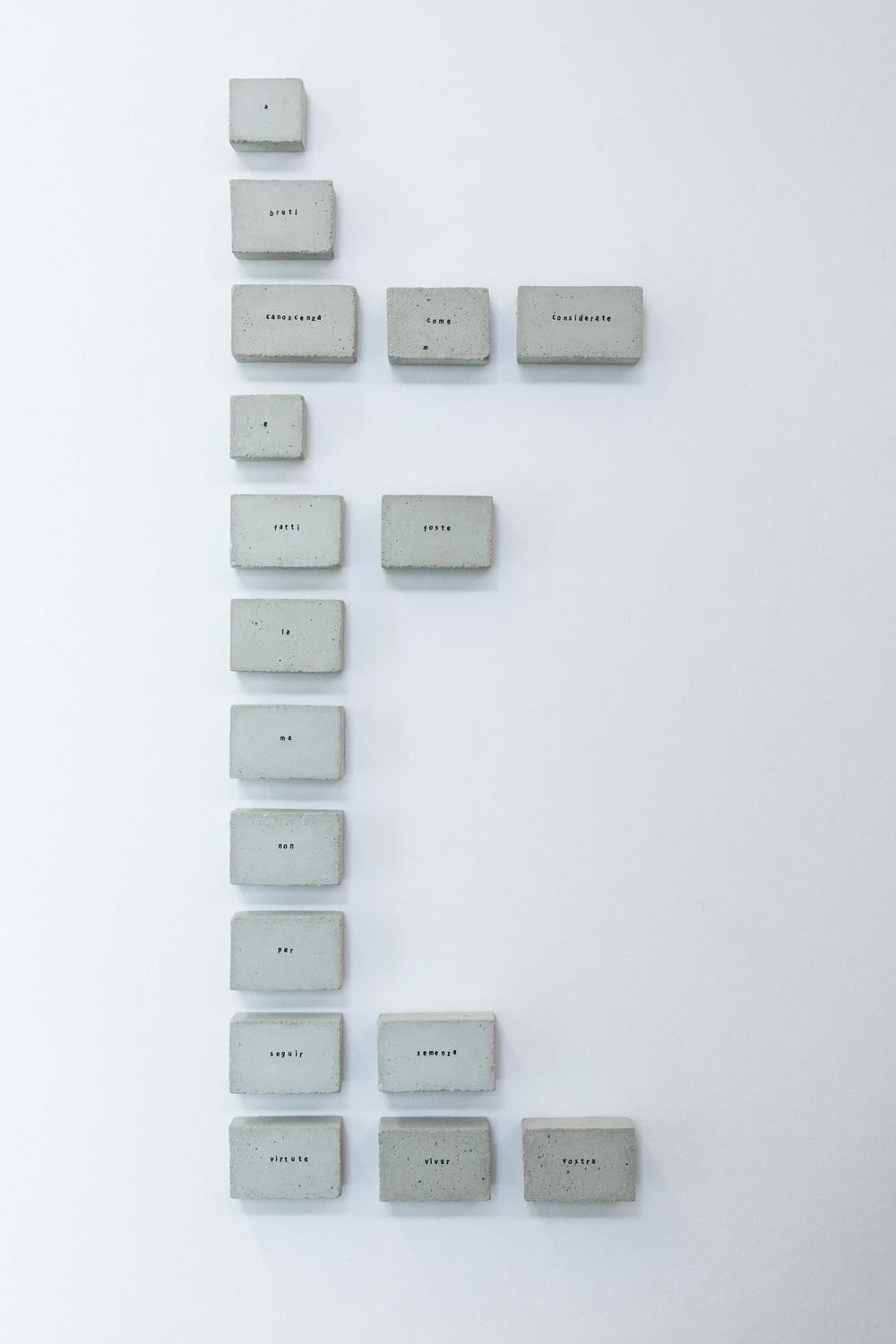

Nella prima sala, infatti, I vizi capitali (2018) - forme morbide in duro cemento su cui gli istinti più profondi e atavici dell’uomo hanno lasciato una traccia indelebile - si confrontano con un famoso passo dantesco - simbolo del viaggio alla ricerca della conoscenza - scomposto in ogni suo elemento significante e ordinato secondo l’alfabeto (Considerate la vostra semenza (XXVI, Inferno), 2018). Nell’ultima sala nel piano interrato, invece, a venir scomposta è l’essenza stessa dell’artista il cui Autoritratto (2012) corrisponde a una precisa combinazione di solidi platonici in quantità proporzionali rispetto agli elementi di cui il suo corpo si compone. Una riduzione ai principi primi, agli elementi costitutivi dell’esistenza, che anziché depotenziare il soggetto, lo carica di pregnanza estetica e intellettuale. Nel mezzo, un continuo addentrarsi nella materia e nell’essenza delle cose, sempre più a fondo e rispondendo a un imprescindibile bilanciamento tra materiale e immateriale, tangibile e intangibile, pieno e vuoto, o meglio: “vuoti pieni”. È ciò che accade per esempio con il ciclo Derive (2016), materializzazioni del vuoto esistente all’interno di condutture idrauliche di cui si perde il contenitore per rendere visibile il contenuto: un elemento base del costruire viene quindi privato della propria funzione perché ne venga indagato ed estetizzato l’invisibile. Lo stesso accade con la serie Apoteòṡi (2016): colate di piombo fuso all’interno degli spazi interstiziali di quei mattoni forati che servono per costruire i muri delle nostre abitazioni, le fondamenta fisiche, materiali di ciò che chiamiamo “casa” e di cui però non resta nulla, se non contorti totem di piombo. Questo andare in profondità, questa tensione verso spazi interiori, questo penetrare la materia per dare forma all’essenza, all’impalpabile, all’invisibile dandone però testimonianza concreta, solida, monolitica in certi casi, potrebbe ricondurre alla dicotomia tra fenomeno e noumeno, forse più nell’accezione schopenhauereiana rispetto a quella kantiana. Se per quest’ultimo infatti il noumeno è una meta fenomenica che si realizza solo in rapporto all’essere umano e per questo può essere oggetto di intuizione sensibile ma resterà sempre inconoscibile, per Schopenhauer il noumeno è la realtà che si nasconde dietro “la trapunta arabescata” del fenomeno, il quale altro non è che parvenza e illusione. In questo senso il noumeno, ciò che sta al di là del sottile velo illusorio del reale, ha una valenza tangibile e concreta, vera.
In the first hall, indeed, I vizi capitali (2018) – soft shapes in hard cement, on which man’s deepest and most atavistic instincts have left an indelible trace – are confronted by a famous passage from Dante’s Divine Comedy – a symbol of the quest for knowledge – which has been disassembled into each of its signifying elements and ordered according to the alphabet (Considerate la vostra semenza (XXVI, Inferno), 2018). In the last hall in the basement, on the other hand, what is disassembled is the very essence of the artist whose Autoritratto (2012) is rendered in a precise combination of Platonic
solids in quantities that correspond proportionally to the elements that compose his body. A reduction to the prime principles, to the elements that constitute existence, which, far from weakening the subject, loads it with aesthetic and intellectual significance. In between, a constant advance into matter and the essence of things, deeper and deeper, responding to an essential balance between material and immaterial, tangible and intangible, full and empty, or better yet: “full voids”. This, for example, is what happens with the cycle Derive(2016), materializations of the empty space that exists inside water pipes, losing the container to make the contained visible: a fundamental element of building is therefore deprived of its function in order to investigate and aesthetize its invisible dimension. The same takes place with the series Apoteòṡi (2016): molten lead castings of the interstitial spaces inside the perforated bricks used to build the walls of our dwellings, the physical, material foundations of that which we call “home” and of which, however, nothing remains but contorted lead totems. This advance into the depths, this straining towards interior spaces, this penetration of matter to give form to essence, to the impalpable, the invisible, while at the same time bearing witness to it in a concrete, solid, in some cases monolithic way, traces back to the dichotomy between phenomenon and noumenon, perhaps more in the manner of Schopenhauer rather than Kant. While the latter posits the noumenonas a phenomenological objective that can only be reached in relation to the human being, and therefore it can be an object of sense intuition while remaining forever unknowable, for Schopenhauer the noumenon is the reality concealed behind “the arabesque tapestry” of the phenomenon, which is nothing but appearance and illusion. In this sense the significance of the noumenon – that which lies beyond the thin illusory veil of reality – is tangible, concrete, and true.
solids in quantities that correspond proportionally to the elements that compose his body. A reduction to the prime principles, to the elements that constitute existence, which, far from weakening the subject, loads it with aesthetic and intellectual significance. In between, a constant advance into matter and the essence of things, deeper and deeper, responding to an essential balance between material and immaterial, tangible and intangible, full and empty, or better yet: “full voids”. This, for example, is what happens with the cycle Derive(2016), materializations of the empty space that exists inside water pipes, losing the container to make the contained visible: a fundamental element of building is therefore deprived of its function in order to investigate and aesthetize its invisible dimension. The same takes place with the series Apoteòṡi (2016): molten lead castings of the interstitial spaces inside the perforated bricks used to build the walls of our dwellings, the physical, material foundations of that which we call “home” and of which, however, nothing remains but contorted lead totems. This advance into the depths, this straining towards interior spaces, this penetration of matter to give form to essence, to the impalpable, the invisible, while at the same time bearing witness to it in a concrete, solid, in some cases monolithic way, traces back to the dichotomy between phenomenon and noumenon, perhaps more in the manner of Schopenhauer rather than Kant. While the latter posits the noumenonas a phenomenological objective that can only be reached in relation to the human being, and therefore it can be an object of sense intuition while remaining forever unknowable, for Schopenhauer the noumenon is the reality concealed behind “the arabesque tapestry” of the phenomenon, which is nothing but appearance and illusion. In this sense the significance of the noumenon – that which lies beyond the thin illusory veil of reality – is tangible, concrete, and true.
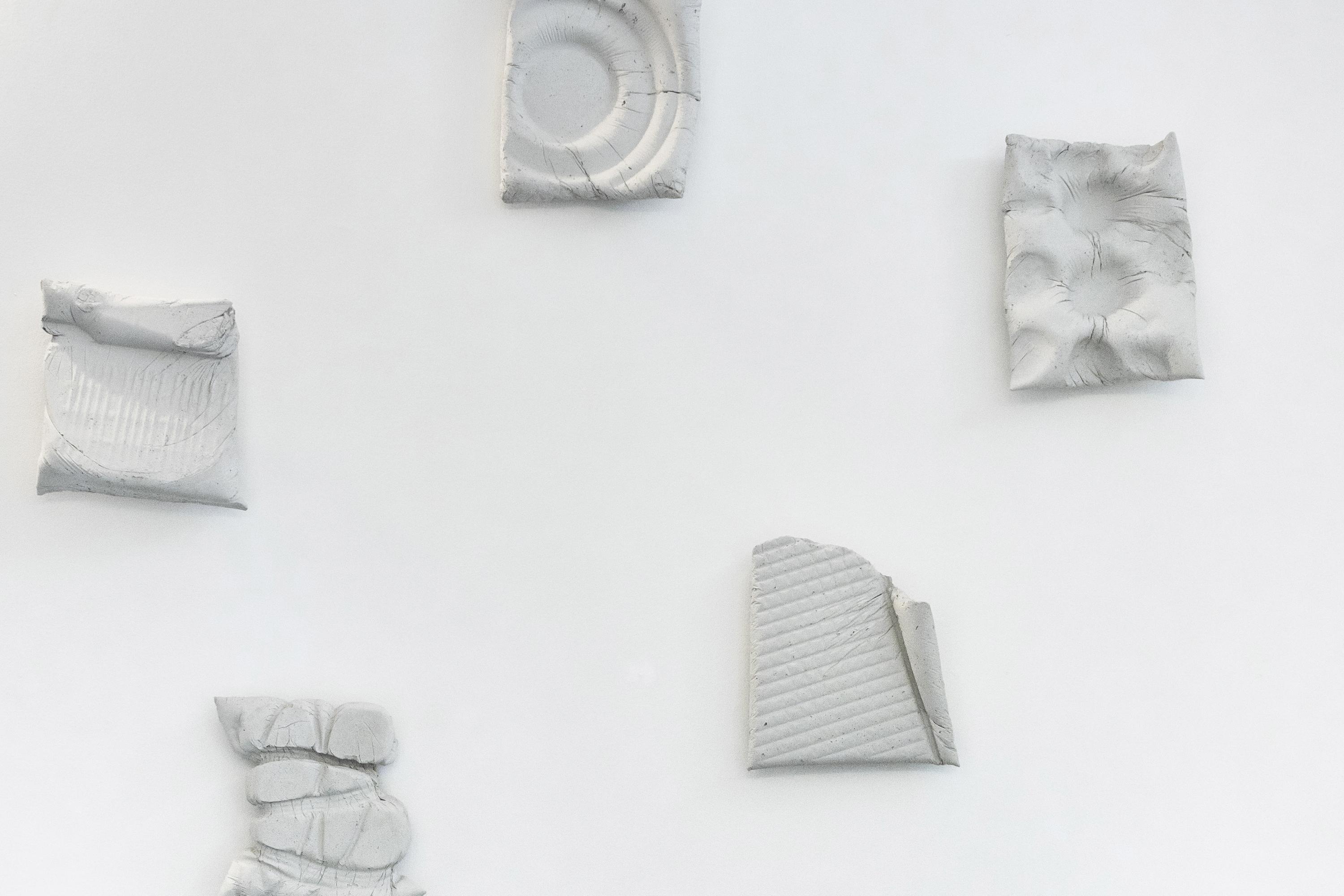
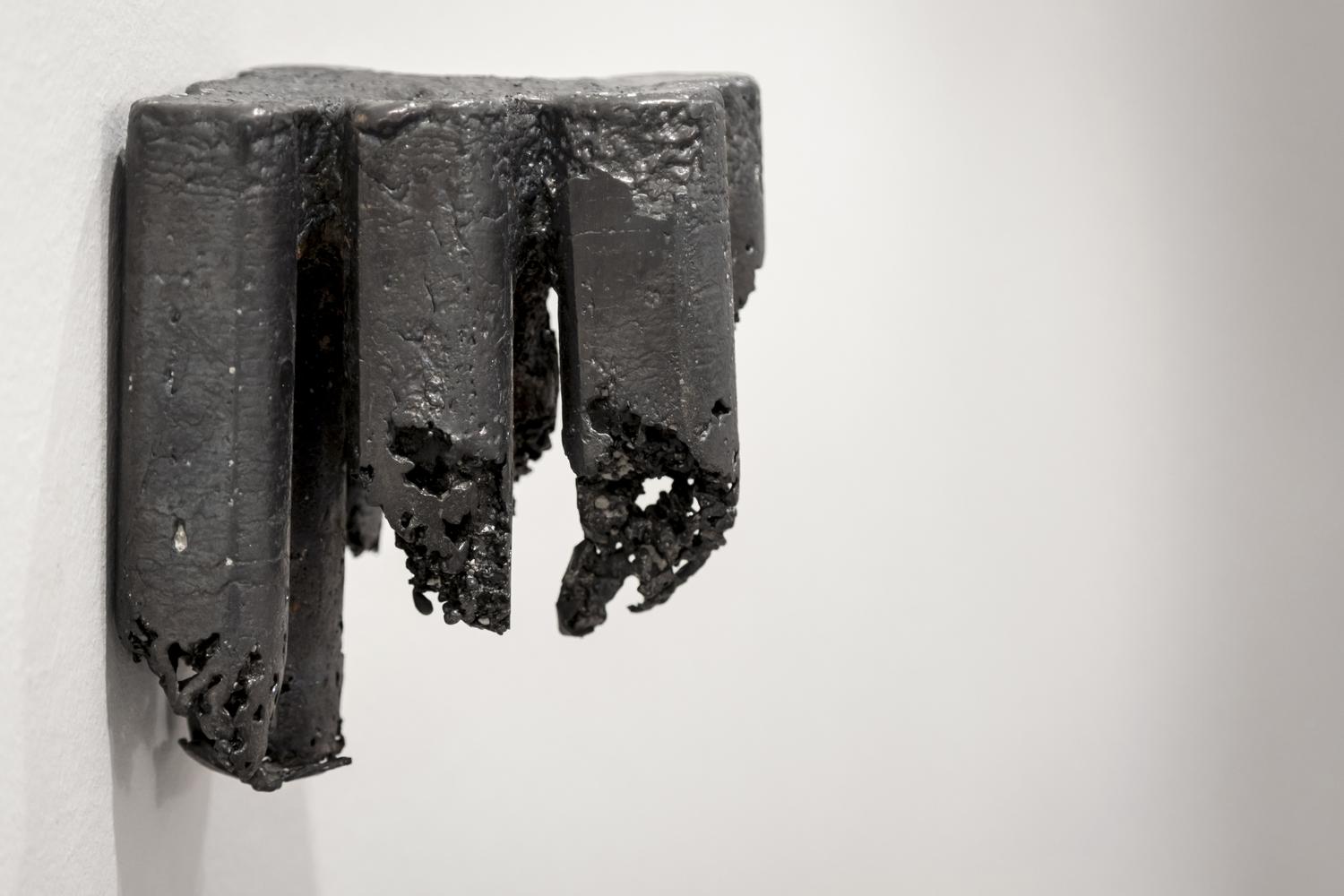
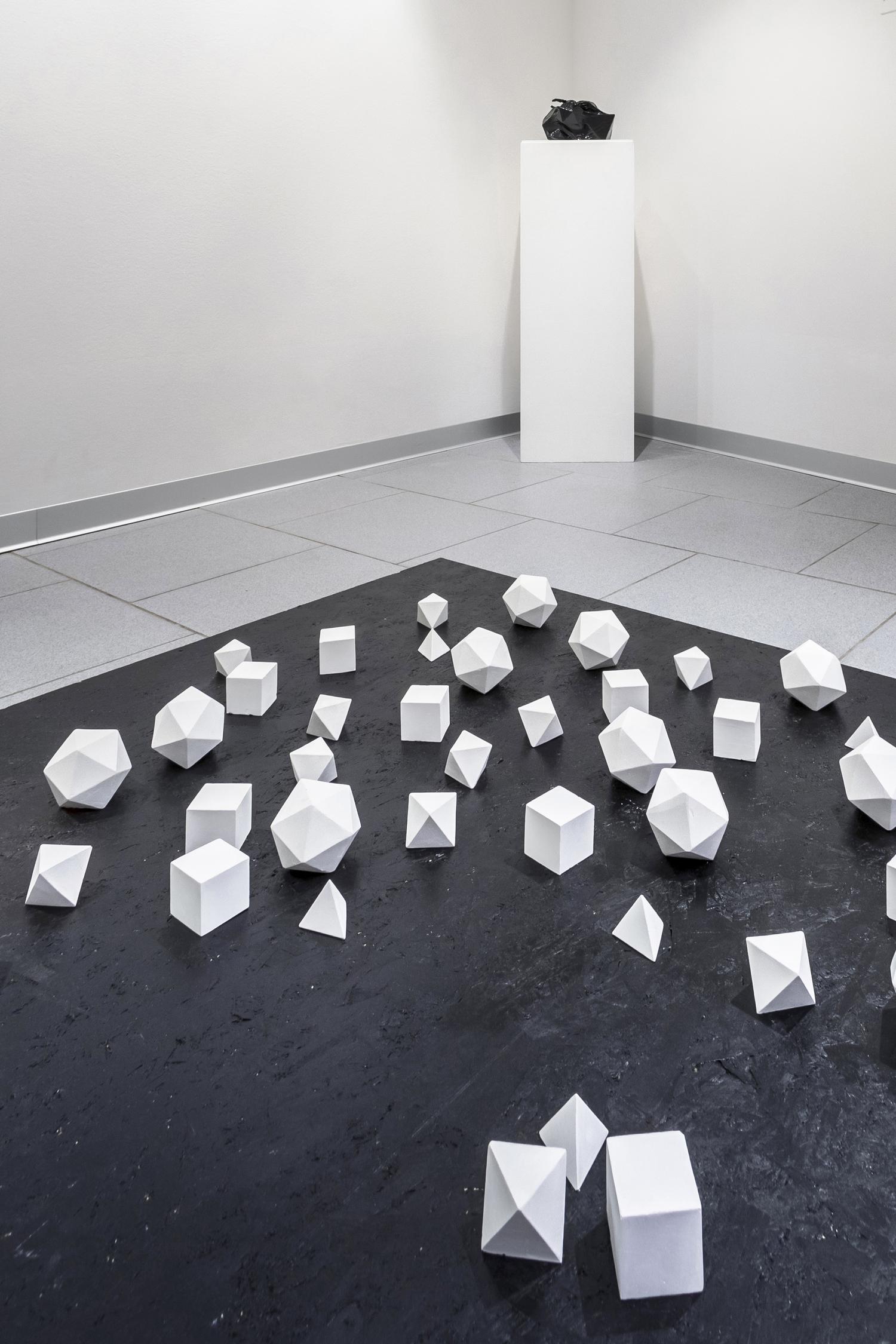
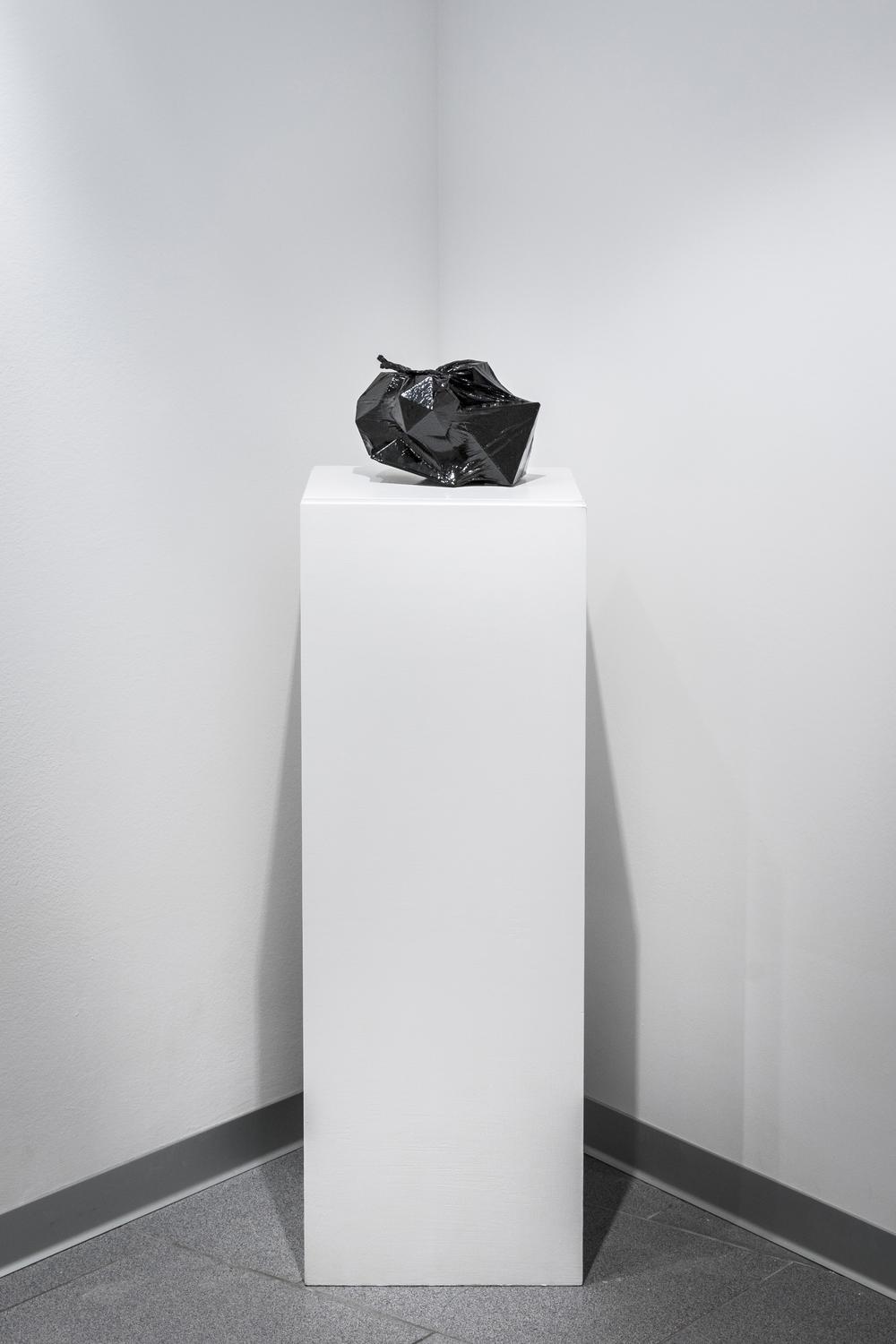
A questo principio possiamo avvicinare l’indagine dell’immateriale di La Rosa, quella sua tensione verso ciò che sta al di là, dentro, in profondità; quel suo dare forma e solidità all’invisibile facendo del vuoto scultura. Alla dimensione oggettuale e immanente va poi sicuramente associata quella del Tempo: il potenziamento fisico ed estetico investe anche questa componente del regno dell’intangibile, proponendo una solidificazione di momenti sottratti al continuo scorrere del tempo ed eternizzati nel cemento o nel gesso alabastrino. È il caso, per esempio, delle serie dedicate ai mesi e alle settimane (in mostra Second week of January, 2014): superfici mutevoli su cui annotare
stati d’animo e sensazioni, non a parole, ma attraverso delicate variazioni cromatiche o della texture. Essere e Tempo si intrecciano nelle relazioni di La Rosa con la materia. Ne è massima esemplificazione Dasein (2013), letteralmente “l’esserci”, qui e ora, in un principio di esistenza attimale ed eterno allo stesso tempo. In quest’opera i solidi platonici, gli elementi costitutivi dell’Essere, sono ricompresi, compressi, costretti da una pellicola nera: riassorbiti nel magma primigenio, come nel primo dei processi alchemici - la nigredo - si preparano a un nuovo inizio. La fine delle cose coincide così con il principio stesso della creazione.
Nessuno di tutti gli elementi trattati dall’artista nella sua ricerca può infatti prescindere dal suo contrario: il dentro non esiste senza il fuori, il vuoto non esiste senza il pieno, l’attimo fuggente non esiste al di fuori della rete eterna del Tempo. Si tratterà allora di camminare su un crinale, su un limite, su un confine (come quello della serie Antinomie, 2013), in cui attraverso la solidità della scultura è possibile esplorare il mistero dell’impalpabile.
stati d’animo e sensazioni, non a parole, ma attraverso delicate variazioni cromatiche o della texture. Essere e Tempo si intrecciano nelle relazioni di La Rosa con la materia. Ne è massima esemplificazione Dasein (2013), letteralmente “l’esserci”, qui e ora, in un principio di esistenza attimale ed eterno allo stesso tempo. In quest’opera i solidi platonici, gli elementi costitutivi dell’Essere, sono ricompresi, compressi, costretti da una pellicola nera: riassorbiti nel magma primigenio, come nel primo dei processi alchemici - la nigredo - si preparano a un nuovo inizio. La fine delle cose coincide così con il principio stesso della creazione.
Nessuno di tutti gli elementi trattati dall’artista nella sua ricerca può infatti prescindere dal suo contrario: il dentro non esiste senza il fuori, il vuoto non esiste senza il pieno, l’attimo fuggente non esiste al di fuori della rete eterna del Tempo. Si tratterà allora di camminare su un crinale, su un limite, su un confine (come quello della serie Antinomie, 2013), in cui attraverso la solidità della scultura è possibile esplorare il mistero dell’impalpabile.
We can associate La Rosa’s investigation of the immaterial, his reaching towards that which lies beyond, within, under the depths, to Schopenhauer’s principle; his way of giving form and solidity to the invisible, making the void into sculpture. To this objective and immanent dimension we must surely add that of Time: the physical and aesthetic enhancement also embraces this component of the domain of the intangible, offering a solidification of moments that have been withheld from the continuous stream of time and made eternal in cement or in alabaster mold. This is the case, for example, of the series dedicated to the months and the weeks (on view is Second Week of January, 2014): mutable surfaces on which to record moods and sensations, not in words but rather through delicate chromatic and textural variations.
Being and Time intertwine in La Rosa’s relations with matter. The maximum exemplification of this is Dasein (2013), which literally means “being there”, here and now, in a principle of existence that is at once momentary and eternal. In this work the Platonic solids, the building blocks of Being, are recovered, compressed, constrained by black film: reabsorbed by the primal magma as in the first of the alchemical processes – nigredo – they prepare for a new beginning. And so the end of things coincides with the principle of creation itself.
None of the elements the artist investigates in his quest can disregard its opposite: the inside cannot exist without the outside, emptiness cannot exist without fullness, the fleeting moment cannot exist outside the eternal net of Time. It is therefore a matter of walking along a ridge, a limit, a border – as in the series Antinomie (2013) – in which the solidity of sculpture makes it possible to explore the mystery of the impalpable.
None of the elements the artist investigates in his quest can disregard its opposite: the inside cannot exist without the outside, emptiness cannot exist without fullness, the fleeting moment cannot exist outside the eternal net of Time. It is therefore a matter of walking along a ridge, a limit, a border – as in the series Antinomie (2013) – in which the solidity of sculpture makes it possible to explore the mystery of the impalpable.
